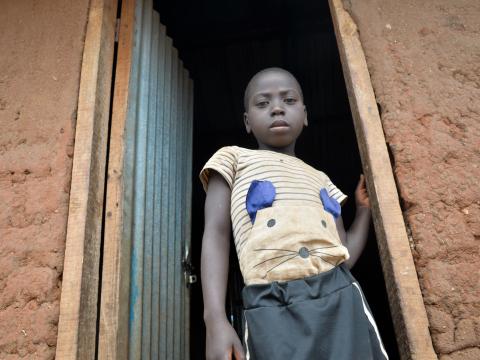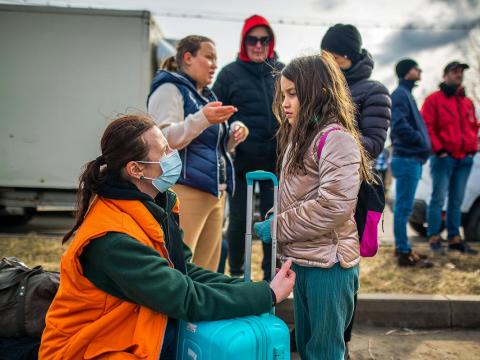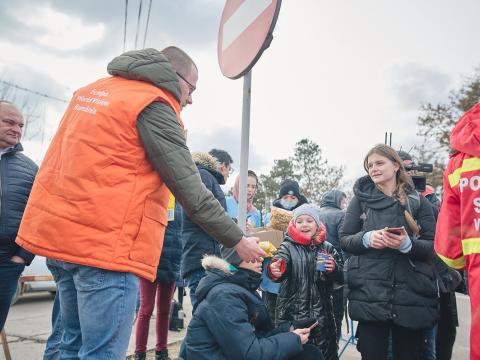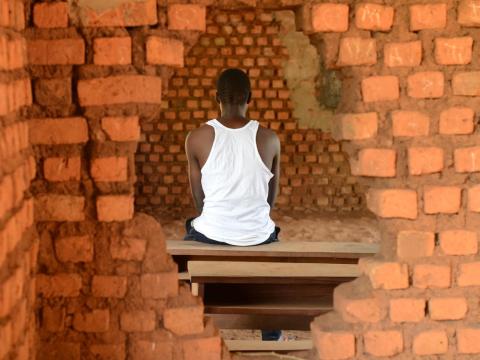
Lessons from one of the most powerful photos of war ever taken
During times of conflict and famine there are difficult choices to make about the use of images of those impacted. James considers how to make those choices.
By James East
With famine looming in multiple countries, the debate about the kinds of images to use in non-profit, marketing and communications is likely to surface again.
Since the last major Somalia famine in 2011-12, the world has experienced the Black Lives Matter movement, which has forced humanitarian agencies to think more carefully about how Africa is reported. The continued growth of social media has also opened up more avenues for people impacted by emergencies to not just see how they are being talked about but to express their views as well.
In debating image use, the discussion, at its simplest, boils down to: Do we share images that portray the reality as it is, revealing the full horror of starvation or conflict and, by doing so, stir the world to respond? Or do we share only images that protect the dignity of the person photographed and perhaps also help undo damaging narratives about poverty and how we perceive countries and even whole continents?
I was provoked to think about this by a thoughtful article in the New York Times written by Phan Thị Kim Phúc, who is perhaps the subject of the most iconic war photo ever taken. In June 1972, Pham Thi was photographed running down a Vietnamese road having been bombed by US forces with the chemical agent napalm. She was so badly burned that she had torn her clothes off, so she was pictured naked.
Pham Thi addresses some of the tensions I raise above. She talks about the lasting shame of being photographed in this way and the power of the photo to convey the awful reality of war. In fact, that photo helped change people's perception of the war in Vietnam and bring it to an end. (Note you can read the article here – the Times allows several articles to be read each month.)
I've also been thinking a lot about children's voices and stories following the awful massacre of 19 school children in Uvalde, America.
One observation that US commentators have been making is that the public never sees the appalling harm guns do to children due to news organisations self-censoring the types of photos used, ensuring images of child victims are never shown. The argument is that if the public got to see them, they might be more inclined to press for a change to gun laws.
I was deeply moved by the testimony of an 11-year-old survivor of the school massacre, Miah Cerrillo, who spoke to CNN about her experience. The tensions in encouraging children to give testimony are clear in this news piece. On the one hand, Miah is advocating for changes, saying she wanted to share her story so people would know what it's like to live through a school shooting. She says, “Hopefully, it can help prevent a tragedy like this from happening to other children.” But Miah has clearly also been deeply psychologically impacted by the experience – she can't sleep, suffers shock at loud noises and needs to receive therapy. These are all indicators of PTSD. You can read her story here.
Humanitarian agencies, like World Vision, abide by the "Do no harm" principle. We must not harm people in doing our work. We do not follow 'the ends justify the means' approaches to our work. This is why informed consent is so important. With the emphasis on informed. Sometimes people, including children, want to speak up and out, even while they are suffering themselves. It's part of giving people, including children, agency - and dignity.
The four principles of the UN Convention on the Rights of the Child are a great guide. One principle says: "States parties shall assure to the child who is capable of forming his or her own views the rights to express those views freely in all matters affecting the child, the view of the child being given due weight in accordance with the age and maturity of the child." The Convention also states that " the best interest of the child shall be a primary consideration".
None of this is easy, which is why it is important for humanitarian communicators tasked with gathering stories about children facing dire circumstances to be given, and indeed to take the time to listen to and talk to children and hear their views, as well as to hear from those who love them and have their best interests at heart.
I think this video about Yana, 11, produced by UNICEF, gets it right. It shows not just the reality of the war in Ukraine but is shot carefully and with compassion.
Helping children understand how their stories might be shared, and discussing the risks to them in their sharing them, is part of helping children – and their guardians – make informed decisions. Rapid in-and-out so-called 'content gathering' trips are not the best vehicle for discovering the stories that children have and are not just willing – but wanting – to share.
Capturing and sharing children's stories is never going to be easy, especially in the midst of conflict or famine. But we must find ways of really listening to children, of sharing their stories in ways that empower them, and in doing so, inspire the world to act.
James East leads Humanitarian Communications for World Vision


